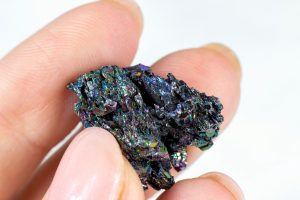CEO Doug McMillon: Walmart’s supply chain cut 1 billion tons of emissions 6 years ahead of schedule

Walmart President and CEO Doug McMillon used his earnings call this week to announce that the company’s suppliers have delivered on its supply chain sustainability program, Project Gigaton, six years ahead of schedule.
Walmart’s suppliers have avoided, reduced or sequestered 1 billion metric tons of greenhouse gas emissions, McMillon told financial analysts. That’s more than the annual emissions for all of Germany. This accomplishment came during a year of strong growth for the company: For FY 2024, ended Jan. 31, Walmart reported revenue of $648 billion, up 6 percent. Its GAAP earnings per share were $5.74, up 34.4 percent.
“From scaled businesses to our faster-growing newer businesses, we’re well on track to continue to hit the financial targets we laid out and make important investments for the future,” McMillon said during the call. “And while we do this, we can grow in a way that helps us achieve our goals of creating opportunities for our associates and becoming a more sustainable business.”
5,900 suppliers and counting
Project Gigaton, announced in 2017, was among the first corporate initiatives centered solely on addressing Scope 3 emissions— indirect emissions from suppliers and vendors — which typically represent the largest portion of a company’s carbon footprint. The company crossed the halfway point for the program in 2022, when it reached a cumulative reduction of 574 million metric tons. At that time, Project Gigaton included more than 4,500 suppliers.
Walmart reported a cumulative reduction of more than 750 million metric tons for Project Gigaton through the 2023 calendar year. Suppliers representing more than 75 percent of the company’s U.S. sales were involved, more than 5,200 suppliers at the time. (There are now 5,900 in the program.) As of the update, Walmart had cut its Scope 1 and 2 operational emissions by 23.2 percent to approximately 14 million metric tons for calendar year 2021, down from almost 20 million metric tons in 2015.
‘Practical things’ drive emissions reductions
While McMillon didn’t offer additional details on the call — and no analysts broached a question about Project Gigaton — he said the success of the program had come through “practical things like energy efficiency, packaging redesign, and load optimization.”
“We’ll continue to work with our suppliers on real initiatives with real-world impacts that make our products better and our business stronger,” he said.
Several factors contributed, said Walmart Chief Sustainability Officer Kathleen McLaughlin, in a blog about the milestone. They included:
- A willingness to be flexible about requirements, depending on the size of the supplier.
- Clearer expectations about what it takes to be considered a “guru” within the program. The latest change required suppliers to share their entire operational emissions footprint and not just the results of reduction projects.
- Offering tools to help suppliers achieve their commitments, such as the Gigaton PPA program, which helps them procure renewable energy.
Even though Project Gigaton is essentially done, the program isn’t going away, said McLaughlin.
“We are enhancing estimates of our Scope 3 footprint, informed by emerging greenhouse gas standards and guidance,” she wrote. “We are assessing which elements of our Scope 3 footprint are addressable and which elements are largely outside our control, which reductions can be achieved through low-cost interventions and which ones are expensive or not feasible through today’s technology.”






